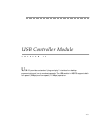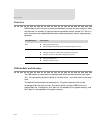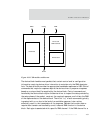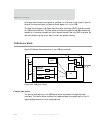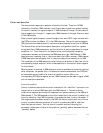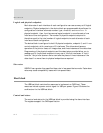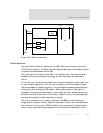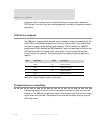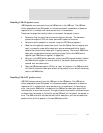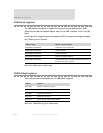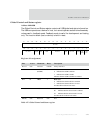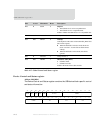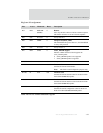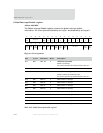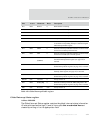
USB device endpoint
714
NS9750 Hardware Reference
consumed. Burst transfers move a maximum of 8 bytes in long word transactions.
FIFO content from more than one transfer descriptor is broken into separate memory
operations.
USB device endpoint
Any USB device requires a bidirectional control endpoint located at endpoint #0. The
data FIFOs in the USB device application logic are unidirectional, so two data FIFOs
are used to create a single bidirectional endpoint. FIFO #1 handles the USB-OUT
packets and FIFO #2 handles the USB-IN packets. Table 414 describes the fields in the
FIFO Status and Control registers that must be set in order for the bidirectional
control endpoint to operate. The remaining Control register fields are application-
specific.
Transmission error handling
USB protocol supports the error-free transmission of packets for bulk and interrupt
endpoints. The USB device application logic contains some control structures to help
the software with this task. Transmission errors are defined as bit-stuffing errors or
CRC check errors.
FIFO Mnemonic Value Description
1 TYPE 00 Control endpoint
1 DIR 0 USB-OUT direction
2 TYPE 00 Control endpoint
2 DIR 1 USB-IN direction
Table 414: Control endpoint register requirements




